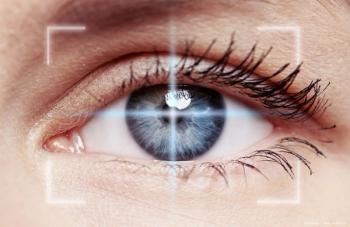
Scleral implant for presbyopia making accommodative gains
Implantation of an investigational device for presbyopia resulted in a minimal 2-line increase in distance-corrected near visual acuity and an actual reduction in the amount of near add needed over time, show findings from a single-center, subgroup analysis.
Reviewed by Y. Ralph Chu, MD
Patient satisfaction is the name of the game in any refractive procedure. This is especially true in the correction of presbyopia. An investigational device for presbyopia (VisAbility Micro-Insert System, Refocus Group) is showing to be satisfying for both patients and surgeons with minimum increases of 2 lines of distance-corrected near visual acuity (DCNVA) and the added bonus of improvement in near visual acuity that increases with time.
Y. Ralph Chu, MD, of the Chu Vision Institute, Bloomington, MN, and his colleagues observed these findings in a single-center, subgroup analysis that was part of a prospective investigational device exemption (IDE) trial of the implant conducted at 13 sites.
The device is a scleral implant, which, once in place, increases the space around the ciliary muscle-thus reducing crowding of the muscle and increasing the ciliary muscle function with resultant accommodation, Dr. Chu noted.
A total of 360 phakic patients who ranged in age from 45 to 60 years were enrolled in the larger study.
Best-corrected distance visual acuity in the study population was 20/20 bilaterally. DCNVA and uncorrected near visual acuity (UCNVA) at 40 cm ranged from 20/50 to 20/80 in each eye.
The manifest refraction spherical equivalent (MRSE) ranged from -0.75 to +0.50 D. Each patient had a minimum add power of +1.25 or greater in order to read 20/20.
Subsample analysis results
The subsample analysis-the goal of which was to evaluate the 12-month safety and effectiveness of the device for improving DCNVA in patients with presbyopia (the primary endpoint)-included 20 eyes of 10 consecutive patients (7 men, 3 women). They were a sample of 68 patients who underwent implantation of the device at the surgical site.
These 10 patients, according to Dr. Chu, were early surgical subjects from the Chu Vision Institute, an IDE clinical research site.
The mean age of the patients at surgery was 53.3 years (range, 46 to 57 years). The mean MRSE was +0.181 D (range, -0.25 to +0.50 D). The baseline monocular average DCNVA was 20/64.2 (range, 20/50 to 20/80) and the binocular average was 20/51.6 (range, 20/25 to 20/80).
Nineteen of the 20 eyes completed the final evaluation at 12 months.
At that time point, Dr. Chu noted, all patients achieved DCNVA of 20/40 (J3) or better, and 85% achieved DCNVA of 20/32 (J2) or better. Regarding UCNVA, all patients achieved 20/40 (J3) or better and 90% achieved UCNVA 20/32 (J1) or better.
Interestingly, the investigators observed a decrease in the mean near-add requirement of 1.02 D, down from 1.49 D at baseline to 0.47 D at the final evaluation.
“Almost all patients gained at least 2 lines of DCNVA,” Dr. Chu said. “The near visual improvements appeared to increase over time. The patients were highly satisfied with the procedure and the results.”
He added that this subsample evaluation of patients at a single center participating in a multi-center clinical trial suggested that the implant system might provide near-vision correction with a corresponding reduction in the amount of refractive add needed to achieve an optimal DCNVA.
Y. Ralph Chu, MD
This article was adapted from Dr. Chu’s presentation at the 2017 meeting of the American Society of Cataract and Refractive Surgery. Dr. Chu is a clinical investigator in the VisAbility trial. The device is under a U.S. investigational device exemption through Refocus Group. The device is CE marked and available in Europe through Refocus Ocular BV, The Netherlands.
Newsletter
Don’t miss out—get Ophthalmology Times updates on the latest clinical advancements and expert interviews, straight to your inbox.
















































.png)


